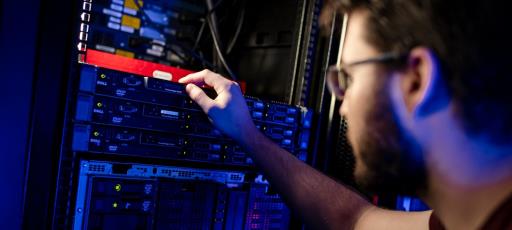
The Full Form of Computer Parts: A Comprehensive Guide
Technology, understanding the terminology behind computer parts can significantly enhance your knowledge and troubleshooting skills. Whether you’re a tech enthusiast, a student, or simply curious, knowing the complete forms of computer components helps demystify how computers work. This guide will walk you through the full forms of essential computer parts, providing insights into their functions and significance.
CPU – Central Processing Unit
A common metaphor for the central processor unit (CPU) of a computer is “the brain. It executes basic arithmetic, logical, control, and input/output operations to execute computer program instructions. The CPU is crucial because it interprets and processes commands from hardware and software, making it a key component in the functioning of any computer system.
GPU – Graphics Processing Unit
A specialized processor called a graphics processing unit (GPU) is used to render images, videos, and animations more quickly. Unlike the CPU, which is optimized for general-purpose tasks, the GPU is engineered to handle complex visual computations and parallel processing. This makes gaming, video editing, and other graphic-intensive applications essential.
RAM – Random Access Memory
Random Access Memory (RAM) is a volatile memory that temporarily stores data that the CPU needs while performing tasks. RAM is critical for multitasking because it allows the CPU to access data quickly without retrieving it from the slower hard drive or SSD. More RAM typically means better performance and the ability to handle more applications simultaneously.
SSD – Solid State Drive
A Solid-State Drive (SSD) is a storage device that uses flash memory to store data, providing faster read and write speeds compared to traditional Hard Disk Drives (HDDs). SSDs improve overall system performance by reducing boot times, speeding up file transfers, and enhancing application responsiveness. Due to their speed and reliability, they are increasingly becoming the standard for modern computers.
HDD – Hard Disk Drive
The Hard Disk Drive (HDD) is a traditional storage device that uses spinning magnetic disks to read and write data. Despite being slower than SSDs, HDDs offer larger storage capacities at a lower cost. They are often used for bulk storage and backup purposes, making them popular for systems requiring substantial data space.
PSU – Power Supply Unit
The Power Supply Unit (PSU) converts electrical power from an outlet into a usable form for the computer components.The motherboard, CPU, GPU, and additional peripherals are all powered by it. A good PSU is essential for system stability and longevity, ensuring each component receives a consistent and adequate power supply.
BIOS – Basic Input/Output System
The Basic Input/Output System (BIOS) is firmware stored on a chip on the motherboard. It initializes and tests hardware components during boot and provides runtime services for operating systems and programs. The BIOS is crucial for system startup and hardware configuration, serving as the intermediary between the operating system and the computer’s hardware.
ROM – Read-Only Memory
A non-volatile memory called read-only memory (ROM) is used to store firmware or software that is not frequently modified. Unlike RAM, ROM retains data even when the computer turns off. It is essential for storing critical instructions and system code fundamental to the computer’s operation.
USB – Universal Serial Bus
The Universal Serial Bus (USB) is a standard interface used to connect peripherals to a computer. USB ports allow for the attachment of devices such as keyboards, mice, printers, and external storage. USB technology has evolved, with newer versions offering faster data transfer speeds and enhanced power delivery Full form of computer parts.
LAN – Local Area Network
Computers and other devices inside a restricted geographic region, like a house or workplace, are connected via a Local region Network (LAN). LANs allow for resource sharing, such as files and printers, and enable devices to communicate with each other efficiently. Understanding LANs is crucial for setting up and managing networks in various environments Full form of computer parts.
Conclusion
Understanding computer parts’ complete forms is more than memorizing acronyms; it’s about gaining a deeper appreciation for how these components work together to make modern computing possible. Each part, from the CPU to the LAN, plays a unique role in the overall system, contributing to performance, efficiency, and functionality. Whether you’re assembling a new computer, troubleshooting issues, or simply expanding your tech knowledge, knowing these terms will enhance your understanding of how computers operate. Dive into the world of computer components with this guide and equip yourself with the knowledge to make informed decisions in the ever-evolving tech landscape Full form of computer parts.



